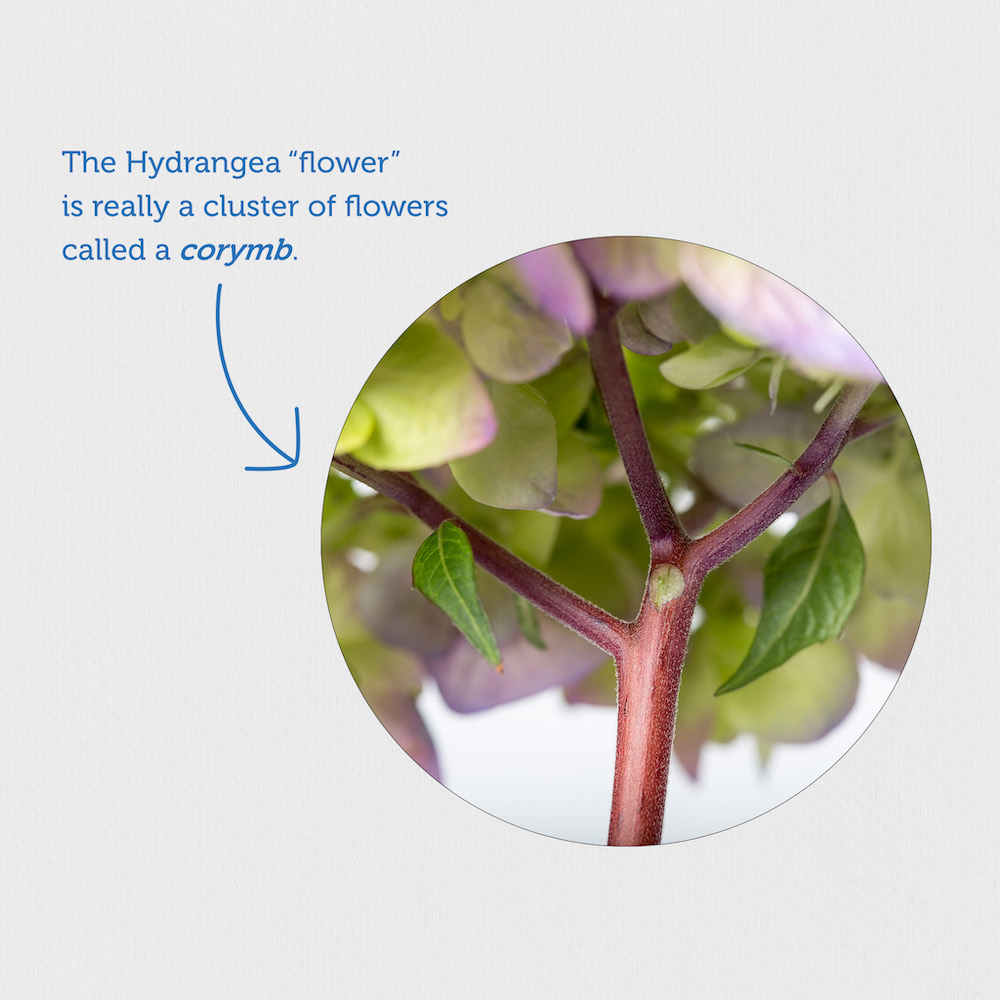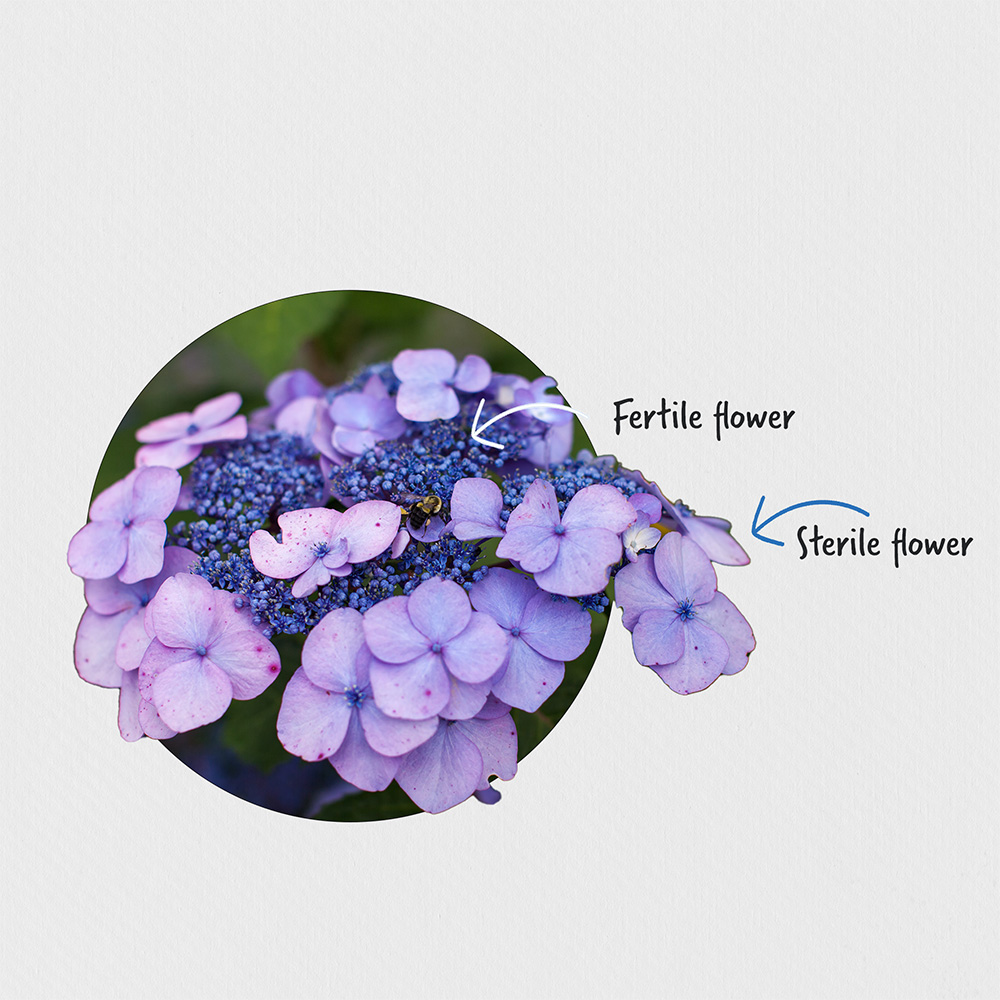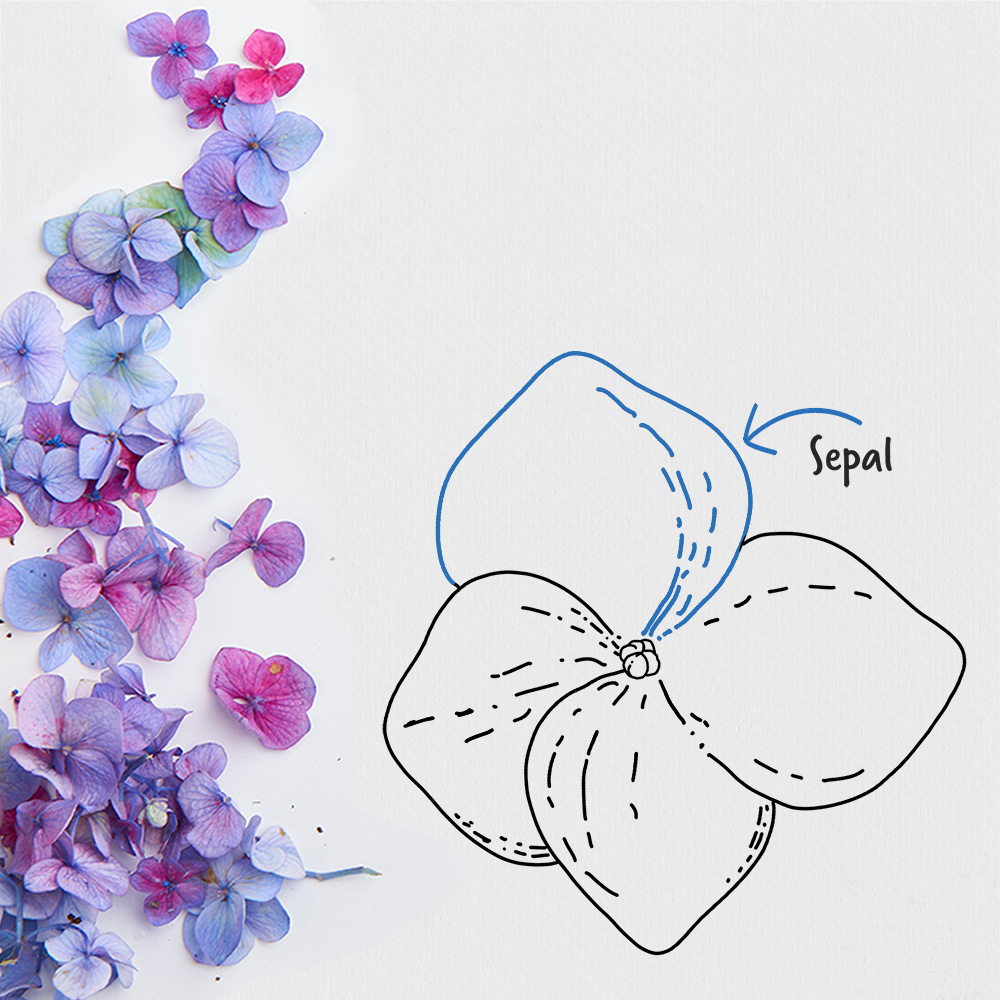We all know that hydrangeas are gorgeous additions to the landscape, whether in the garden as a multi-season shrub, or in decorative containers to bring color to your patio. But, do you know what makes up a hydrangea? Whether you’re new to the word of hydrangeas or a seasoned pro, keep reading for all the details so you can learn more about these garden beauties.

Did you know that hydrangea flowers are actually made up of a cluster of flowers? This cluster of flowers is called a corymb, and not all corymbs are the same. They can form in different shapes. For example, The Original, BloomStruck®, Summer Crush®, and Blushing Bride are all mophead hydrangeas, when Twist-n-Shout® is a lacecap. A corymb can also form in the shape of a panicle, like those on First Editions® Berry White® Panicle Hydrangea.

A corymb, those clusters of flowers, are made up of flowers that grow in a pattern where the outermost flowers are born on longer pedicles than those in the inside. This pattern brings the flowers up to a common level.

Corymbs can have both sterile and fertile flowers. It’s easy to spot the difference between sterile and fertile flowers on lacecap hydrangeas, like Twist-n-Shout® Hydrangea. The sterile flowers have showy sepals, when the sterile flowers do not.

You might have noticed we said “sepal” above instead of petal. Hydrangeas, in fact, don’t have petals. The petal-like structures on a hydrangea flower are actually sepals, and these sepals have the ability to change their color depending on the pH and presence of aluminum in your soil. For example, if you plant The Original Hydrangea in alkaline soil the sepals will be pink, when if you plant it in acidic soil the sepals will be blue. To learn more about how that works, make sure to watch our episode of Garden Gab™ dedicated to hydrangea soil science.